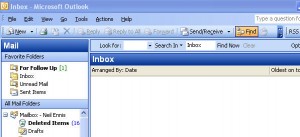
To the right you can see a screen shot of three RSS feeds as seen on my iGoogle page. Two of them are good, one of them is not so good. Can you tell the difference?
They're all really specific in nature. The first one just shows breaking news as reported by the ABC. The second shows recent posts made be people about cruises in Australia via the CruiseCritic.com message boards, and the third shows new posts to the "General Cruise Discussions" section of the OzCruiseCritics message boards.
With the ABC feed, whenever there's a new story, it appears at the top of the list, pushing older stories off the bottom of the list.
Same with the Cruise Critic feed (the 2nd one). As a new post is received on a particular subject, that subject goes to the top of the list, pushing older ones off the bottom.
The problem with the third feed ("General Cruise Discussions") is three-fold:
1. The name of the feed doesn't do OzCruiseCritics justice. Anyone casting a quick glance at the feed doesn't know where it's from. With the first two feeds on this example, it's quite plain who's supplying them, but not the third feed.
2. The discussion topics are not formatted properly. The name of the feed is repeated in each of the item descriptions. E.g. you see "General Cruise Discussions :: Re: Queensland Cruise" and "General Cruise Discussions :: Re Snorkelling". This is redundant. We already know what feed the item is coming from by looking at the title of the feed. Each of these items should have a more concise description. In this case they should be "Queensland Cruise" and "Snorkelling".
3. You can't see it from the picture, but take my word for it, whenver someone replies to a topic on the OzCruiseCritics feed, it generates a new feed item. So if I was to reply to the "Snorkelling" discussion, the feed would end up looking like this:
General Cruise Discussions :: RE: Snorkelling
General Cruise Discussions :: RE: Queensland Cruise
General Cruise Discussions :: RE: Snorkelling
I think that is crowded and difficult to read. What should really happen is that if an item is updated, it goes to the top of the list, and the old version of that item is removed from the list. So the feed should look like this:
Snorkelliung
Queensland Cruise
These suggestions might seem pedantic, but the whole aim of RSS is to get your content read. Whish means the info needs to pack as much punch as possible, with as little clutter as possible. The reward for this is that your message gets out, more people hear what you say, and you get more traffic to your site.





